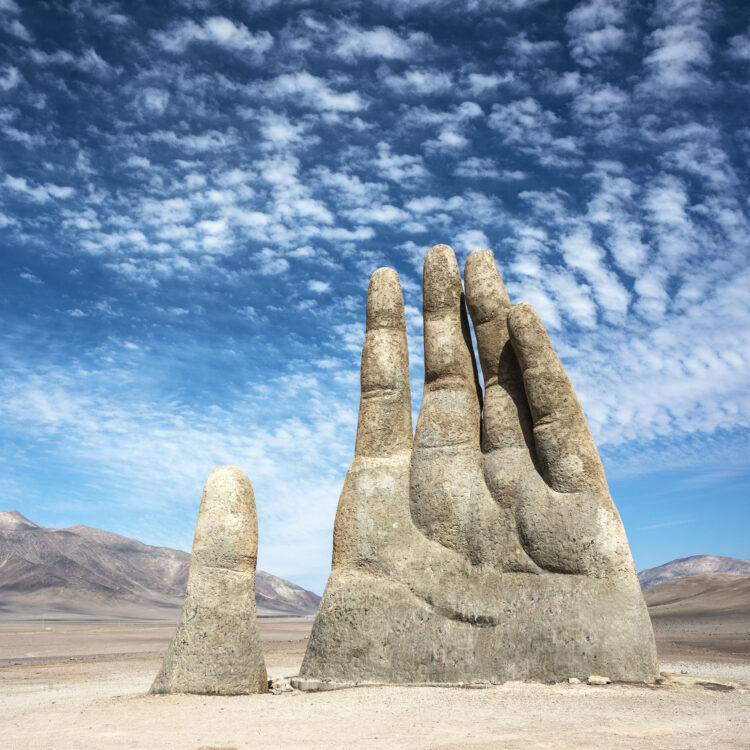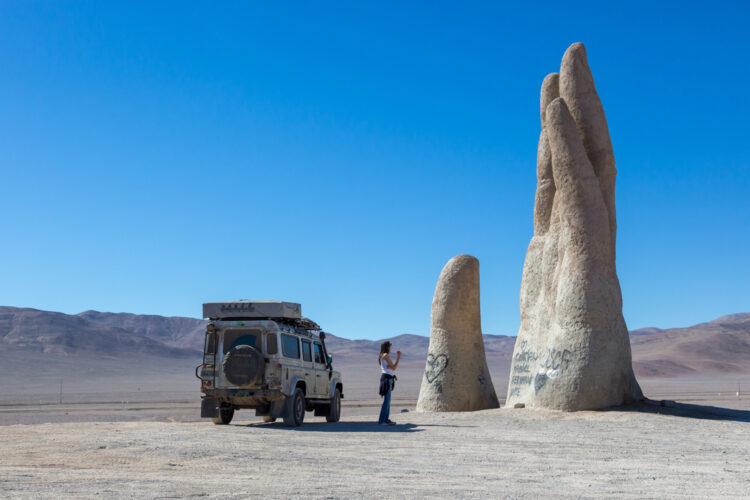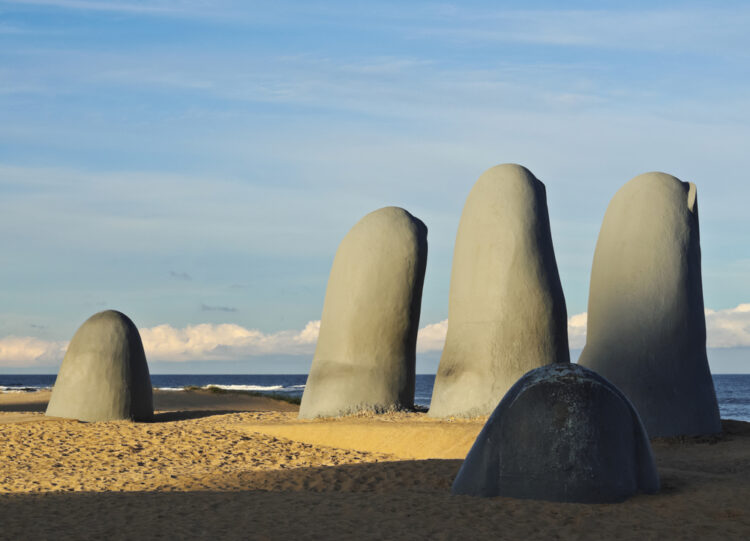Situated in the desolate beauty of Chile’s Atacama Desert, a colossal hand emerges from the sandy surface. This iconic, larger-than-life sculpture known as “La Mano del Desierto” or “The Hand of the Desert” has been an intriguing spectacle for many who traverse Chile’s Route 5. The Hand of the Desert is an imposing, 11-meter (36 feet) tall sculpture that depicts a right human hand, rising eerily from the desert sands, palm facing up towards the azure sky. Its location, about 75 kilometers (46 miles) to the south of the city of Antofagasta, could be described as the middle of nowhere, surrounded by sand and low hills stretching for miles in every direction.

The sculpture is positioned with a deliberate intent, its presence amplified by the desolation of its surroundings. To the south, the Cerro Paranal observatory, housing South America’s largest telescopes, lies about 60 miles away. It serves as the only other notable landmark within a considerable distance.
This striking work of art was created by Chilean sculptor Mario Irarrázabal, renowned for his monumental sculptures that embody themes of human suffering and helplessness. His works are characterized by their sheer size and their solitary locations.
Constructed in the early 1990s, La Mano del Desierto was financed by Corporación Pro Antofagasta, a local booster organization. The sculpture’s inception was fueled by Irarrázabal’s fascination with the human form and the desire to encapsulate feelings of loneliness, emptiness, and vulnerability.
Choosing the Atacama Desert as the location for the sculpture was not arbitrary. The Atacama, considered one of the driest places on Earth, is an environment where few life forms can survive. This barrenness and desolation contribute to the profound sense of loneliness and insignificance before the vastness of nature that the sculpture aims to evoke.
Furthermore, its location alongside Chile’s Route 5 ensures that the sculpture is accessible to the numerous travelers using this route. The sight of the hand provides an unexpected interruption to the monotonous landscape, compelling visitors to stop and ponder its presence and the deeper meanings it might represent.
Visitors seeking to experience La Mano del Desierto usually embark from the city of Antofagasta. Regular buses travel the distance, and car rentals are also readily available. Given its proximity to Route 5, the sculpture is easy to find, and visitors are allowed to explore it freely.

Despite the Atacama’s arid climate and the winds that occasionally whip across its surface, the hand is typically not covered by sand. It’s constructed on a cement platform that prevents it from being swallowed by the shifting desert sands. This ensures that the Hand of the Desert stands prominently, forever reaching out from the landscape that seeks to envelop it.
La Mano del Desierto is not the only monumental hand constructed by Mario Irarrázabal. A decade earlier, he left his mark some 1,200 miles east of Antofagasta, in the Atlantic coastal resort of Punta del Este, Uruguay. There you find another arresting sight on the beach—a giant hand, constructed with four concrete fingers and a thumb, emerging from the sand as if grasping for life.
This Uruguayan installation, originally named ‘Man Emerging to Life’, has since been affectionately known by locals as ‘Monumento al Ahogado’ or ‘Monument to the Drowned’, and colloquially, simply as ‘The Hand’. The sculpture, inaugurated in 1982, was intended to warn swimmers about the potential dangers of the beach’s rough waters.

The artistic parallels between the two sculptures are fascinating. It’s as if a subterranean titan is extending its arms across the South American continent, one hand emerging on Uruguay’s Atlantic coast and the other rising from the Atacama Desert in Chile. This duality portrays an extraordinary symbolic grasp on the continent—two remarkable installations that leave a profound impression on their respective landscapes and visitors.

